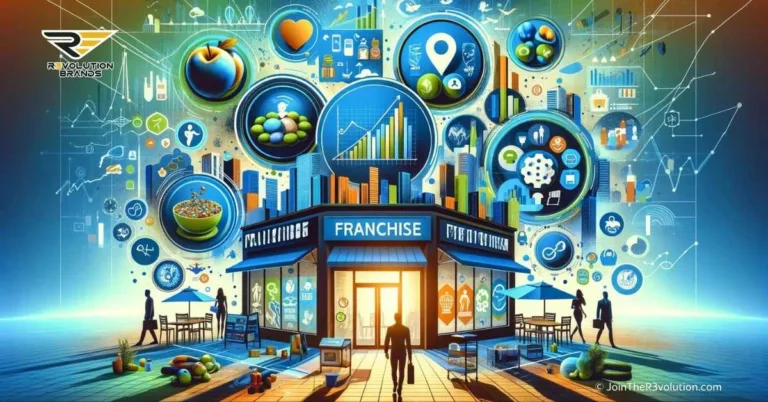The business landscape is continually changing, and companies need to anticipate potential challenges to maintain their success. Navigating the business landscape in 2024 will require a unique set of business resilience strategies, with adaptability and flexibility being key components.
In this article, we’ll explore how companies can develop adaptive business planning and overcome business challenges as we approach 2024, and examine case studies to showcase successful implementation of resilience strategies.
Anticipating Potential Challenges in the 2024 Business Landscape
The business landscape in 2024 will be shaped by technological advancements, demographic changes, global events, and regulatory changes. Companies need to anticipate challenges and prepare strategies to navigate disruptions.
Here are some of the potential challenges that companies could face in 2024.
Technological Disruptions
The business landscape will continue to be impacted by technological developments, including AI, machine learning, and the Internet of Things. Companies that do not adapt to technological disruptions could be left behind.
Global Events
Global events, such as natural disasters, pandemics, recessions, or geopolitical tensions, can significantly impact industries, supply chains, and consumer behavior.
Organizations that are not prepared to weather potential impacts could experience revenue losses and long-term damage to their reputation.
Demographic Shifts
As the world population continues to grow and age, demographic shifts could lead to changes in consumer preferences, market trends, and labor supply. Companies need to be aware of demographic shifts and adapt their strategies accordingly.
Regulatory Changes
Regulatory changes, such as tax policy changes or trade agreements, can affect costs and revenues. Companies need to be prepared to adapt to regulatory changes and ensure compliance to avoid severe financial, legal, and reputational risks.
Developing Adaptive Business Planning for 2024
To succeed in the business landscape of 2024, companies need to develop adaptive business planning that enables them to respond to challenges and seize opportunities.
Here are some strategies that organizations can adopt to develop adaptive business planning.
Scenario Planning
Scenario planning is a strategic planning tool that helps companies anticipate potential obstacles and develop strategies to overcome them. By developing various scenarios and building contingencies for each, companies can more efficiently respond to challenges as they arise.
Teams can work together to map out the different paths companies could take in a certain situation to determine the most optimal solution. Then, these solutions are ranked according to feasibility, stakeholder value, and other criteria to help determine the best solution.
Conducting simulations of these scenarios can also allow companies to identify gaps in their planning and prepare better for unexpected events.
Collaborative Decision-Making
Collaborative decision-making involves bringing together teams with diverse experiences and perspectives to make critical business decisions. Business executives can make better decisions by utilizing a variety of perspectives and experiences utilizing collective insights.
Continuous Learning
Continuous learning involves regularly updating knowledge and skills to adapt to changing business environments. By providing ongoing training, education, and development opportunities to employees, companies can ensure that their teams remain at the forefront of industry changes.
When employees are frequently learning, they are better able to adapt to changing roles, allowing companies to pivot more quickly in response to challenges.
Importance of Adaptability and Flexibility in Business Planning for 2024
The 2024 business landscape will demand companies to be adaptive and flexible in their planning and operations. Companies that are rigid and unwilling to change may face challenges, while companies that are willing to adapt and change will be able to navigate through challenges more effectively.
Here are some benefits of adaptability and flexibility in business planning:
Faster Response to Changes
Flexible companies can respond quickly to changes in the market, customer demand, or regulatory landscape. Being able to respond more quickly can lead to better adaptation, higher revenue, and greater customer satisfaction.
Increased Resilience
Companies that are flexible and adaptable can handle disruptions better.
By building resilience into their strategies, companies can become antifragile, meaning they thrive under crisis rather than just surviving. This resiliency allows for long-term stability and sustained profitability.
Improved Collaboration
Collaboration between teams can be enhanced through greater flexibility. An organization that values flexibility and adaptability is better able to pivot when projects change or expectations evolve. The organization fosters a more collaborative culture and helps cross-functional teams to align more successfully by giving employees the freedom to propose and test new ideas.
Overcoming Business Challenges: Practical Steps
To achieve business resilience, companies can take specific practical steps that will help them overcome challenges.
Here are some practical steps that businesses can take to build resilience against challenges in the 2024 business landscape.

Identify Potential Disruptions
Companies need to identify potential disruptions that could affect their operations and develop strategies to mitigate the impact of these disruptions. Potential disruptions could include natural disasters, cyber-attacks, or changes in regulations.
Companies can develop risk assessments around these potential disruptions and formulate contingency plans.
Develop Cross-Functional Teams
Businesses can develop cross-functional teams by bringing together people with diverse backgrounds, knowledge, and experiences. Cross-functional teams can improve decision-making and foster collaboration, leading to better business outcomes.
Focus on Customer Needs
Companies that focus on customer needs are more likely to adapt to changing market demands and succeed in the long run. Companies should use data analytics, customer feedback, and market research to understand their audience and develop products or services that meet their unique needs.
Embrace Technology Innovations
Technological innovation can enhance operations and enable companies to pivot more quickly. Focusing on digital transformation and the adoption of new technology can boost business resilience and achieve sustained growth.
Companies can also use artificial intelligence, machine learning, and automation to streamline operations, minimize repetitive tasks, and increase productivity.
Knowing the Blueprint for Business Resilience
The business environment of 2024 will be characterized by significant changes and disruptions. Success in this landscape will require companies that are flexible, adaptive, and resilient.
To develop resilience strategies, companies can identify potential disruptions, prioritize customer needs, embrace technological innovation, and develop cross-functional teams.
Businesses can reduce the impact of possible problems and take advantage of opportunities in the dynamic business environment by implementing resilience strategies.





